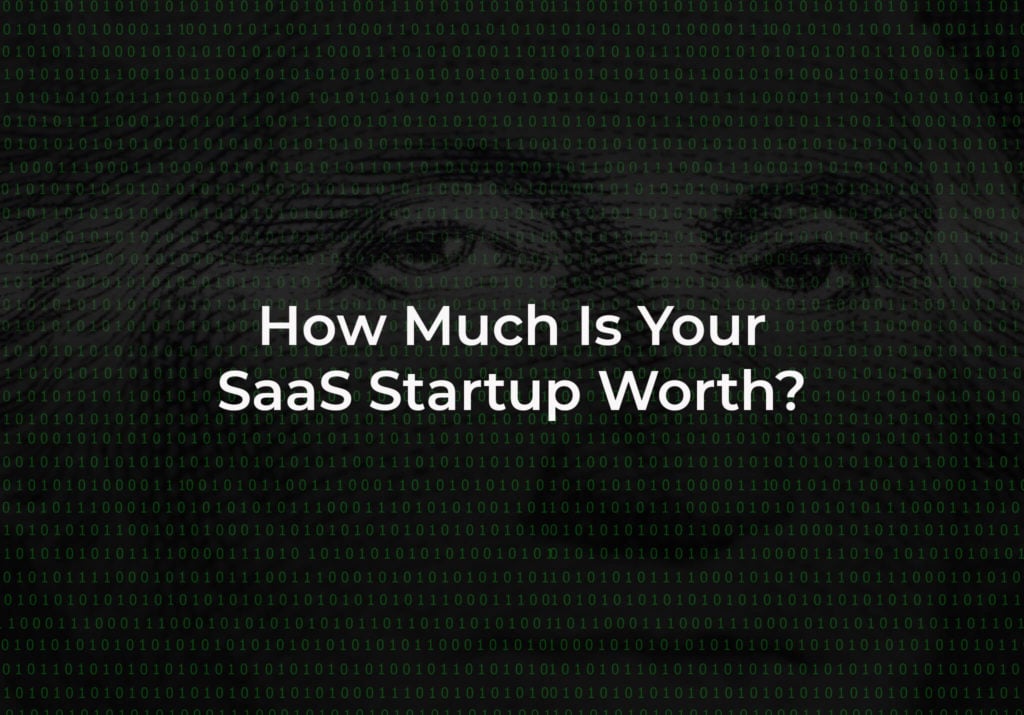How much is your SaaS startup worth? While the only accurate answer we can provide is “whatever a buyer is willing to pay.” There are many useful methods you can use to come up with a rough valuation which we outline below. To help narrow things down further, we’ve focused on those that VCs look at and find crucial. Knowing these factors will help you stay laser-focused on the right metrics and set yourself up for success down the road.
MRR, Metrics, Multiples
One common method for determining the value of your SaaS is to use a standard business valuation calculation. This uses a specific number to multiply the business’s average net profit to determine the listing price. Multiples are a bit difficult to determine and can range from 20x to 80x, depending on the business and industry.
Metrics to consider when determining your multiple should include the level of the owner’s involvement, growth trends, business age, churn, CAC, LTV, and MRR vs. ARR.
What Is MRR?
This Is the monthly recurring revenue. ARR would be the annual recurring revenue. As a business owner, it can be tempting to promote your yearly plans to inflate your ARR and increase the overall income of your SaaS.
However, many investors prefer to see a steady and robust MRR. This is considered safer and more predictable. To increase the value of your SaaS, focus on growing your MRR and keeping your churn low.
What Are Multiples?
There are two main types of multiples to use for valuation, equity, and enterprise value. There are also two methods for performing an analysis using multiples. There’s the comparable company analysis (Comps) and the precedent transaction analysis (precedents).
When using multiples correctly, it helps investors to determine the potential future value of a SaaS startup.
Caution should be used with this method. It doesn’t accurately portray a company’s growth performance. It also simplified several complex factors into a single value, which can be inaccurate or misleading. Multiples are best used for determining short term data rather than the long term.
SaaS Valuation Multiples 2020
The onset of COVID brought an interesting change to the valuation multiples for SaaS firms. As with all industries, there was an initial drop, which was seen through all industries. This is to be expected when faced with the uncertainty of a global pandemic.
However, in the following months of 2020, the world changed, and with it, so did the dependency of SaaS. Businesses that never considered investing in software a priority are now re-evaluating that decision. This has led to an ultimate high in SaaS valuations. The median multiple rose almost 20% from what pre-COVID levels were.
Some of the most in-demand software are video communications, data management, digital content and service delivery, messaging, and digital storefronts. As businesses continue to depend on these software solutions, the SaaS companies benefit from having very low churn rates.
As companies look to the future, the software will become invaluable. The new normal has businesses valuing and investing in software as an integral part of their current operations and growth.
Valuation of Comparable Companies
Because there are so many methods of valuation, sometimes it can be helpful to make a comparison. If another similar company already has an established value, then you can build on this data to determine the value of your SaaS.
One easy way to begin this method of valuation is to look at publicly traded companies. The data is easily accessible, updated in real-time, and readily accepted by business professionals.
To justify the valuation of your business, show how and why it’s comparable to the chosen one currently publicly traded. This could be through current positioning or with a look at historical track records.
There’s one caveat to this method, and that’s the public to private discount. Because public companies are traded on the stock market, there is a greater demand. They also tend to be larger companies that are less likely to fail, which encourages investors to spend more.
To use this method, find the current revenue multiple of a public SaaS company that has a similar growth rate to your company. Subtract two from that multiple. Now use this new multiple to multiply your company’s twelve-month revenue.
Proprietary Technology (IP) Developed By The Company
You may find that using traditional valuation techniques can give inaccurate results when applied to proprietary software. Even if you try to use methods that are commonly applied to similar intellectual property, the results can be misleading.
This can be a problem when there are multiple departments looking at the software valuation to make their business decisions. While the software is its own industry, it also influences countless other industries. For many, 10% of the investment goes into the software. This percentage increases for the healthcare, education, and banking industries.
For some buyers, the purchase of a SaaS company is to acquire a complete package to improve business processes or to integrate into their platform. For others, the investment in a SaaS is about determining the entire value of the company. This also includes the value of the actual business, the software product, and IP ownership.
If a company owns valuable intellectual property, this gives them a competitive advantage and improves the chances that they could be acquired by a larger company seeking their solution.
However, if a company does not have any proprietary technology, they run the risk of being copied by a competitor or a future player in the market, which could negatively impact its valuation in the eyes of investors.
Accurately Value Your SaaS
Sometimes, it can be helpful to have an outside neutral third party to determine your SaaS value. Without the influence of emotions, they can give a more accurate determination.
It’s also helpful to work with an outside party that has experience working with investors. This can give you additional insight into what a venture capital firm considers valuable.
Our firm can provide the guidance and support you need to further protect and develop your SaaS business. Schedule a free consultation today and speak with one of our experienced and knowledgeable attorneys.



